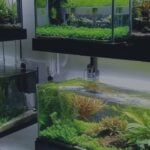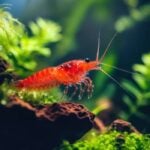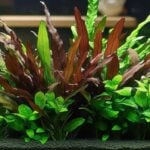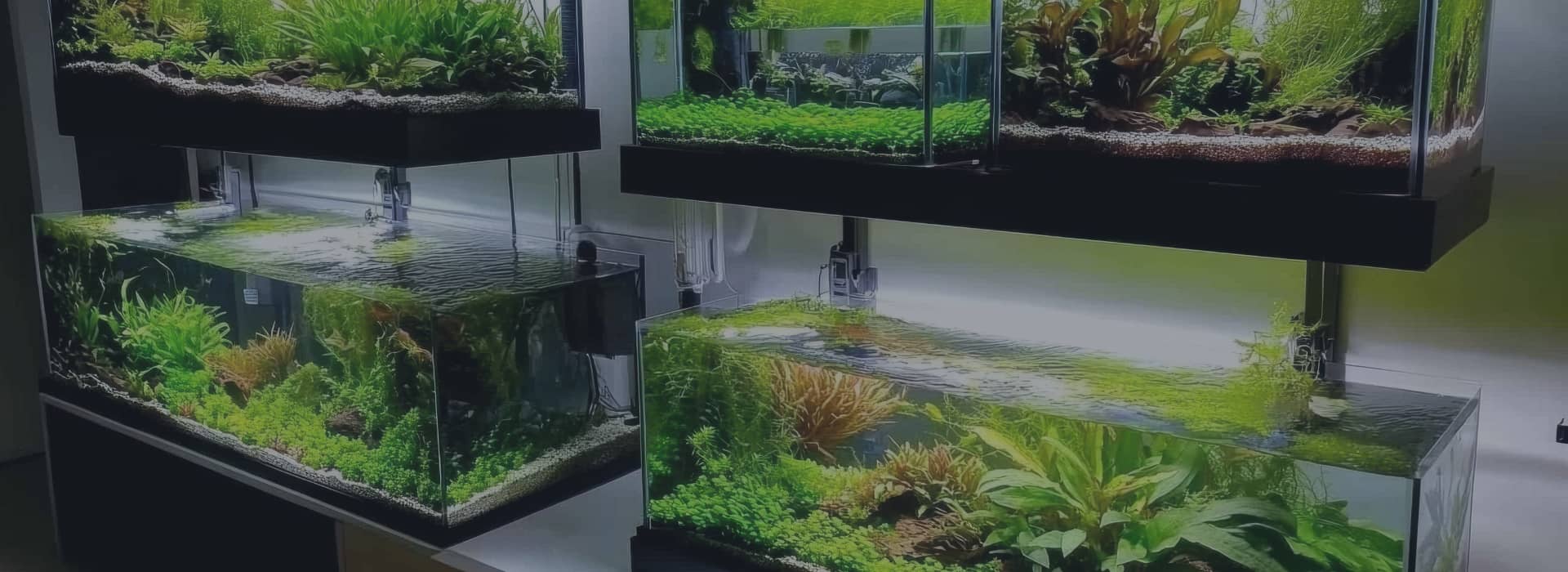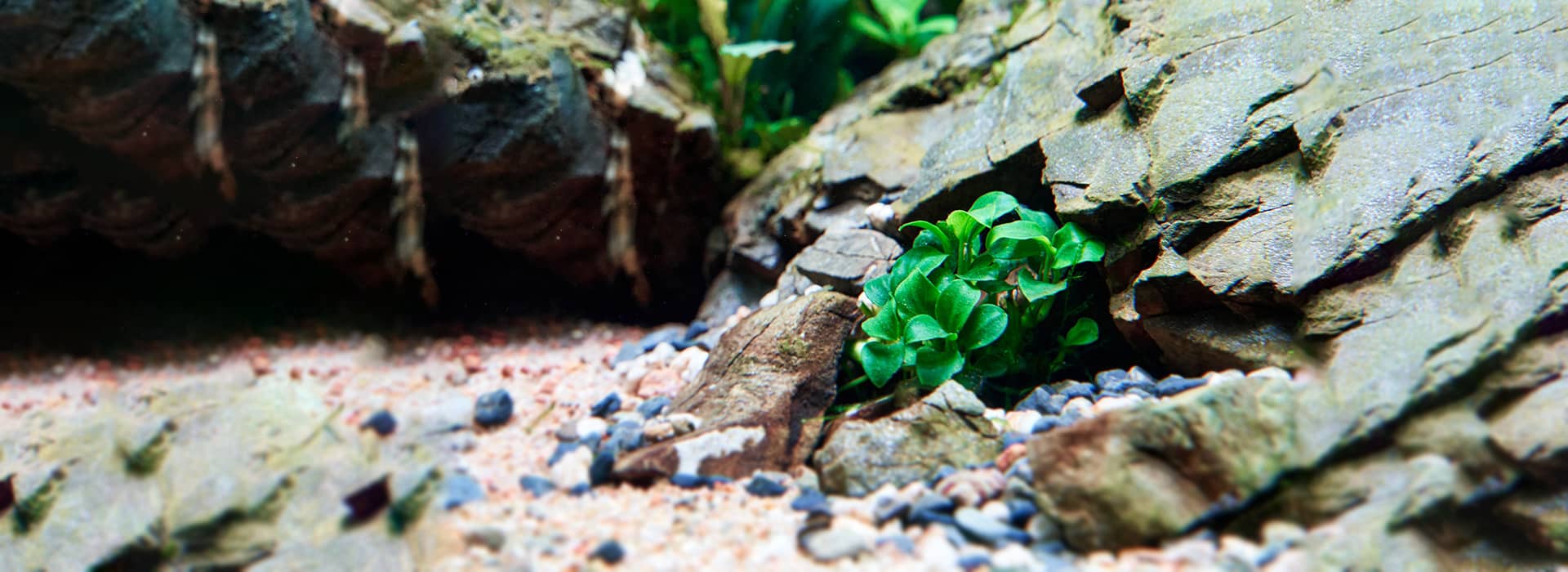Cichlids, or the “soap operas” of the fish tank world, are an absolute riot to watch and a thrilling plunge into aquatic intrigue! These flamboyantly coloured underwater divas are renowned for their remarkable diversity – we’re talking about 2000+ species here – and they come in every shade you could find in a deluxe paint box. But the real kicker is their personalities; they’re so engaging, you’d swear they think they’re people. From their intricate courtship dances (which could rival any romantic reality TV show) to their fiercely protective parenting – yes, they actually nurture their young – their behaviours can be as rich and complex as a good page-turner novel. Some cichlids are skilled interior decorators too, rearranging their aquarium décor and substrate to their heart’s content. In the cichlid world, there’s never a dull moment; it’s high drama, intrigue, and a daily burst of colour, making them a fantastic spectacle for any fish enthusiast.
Understanding Cichlids
Understanding Cichlids is essential for their proper care and management in an aquarium. Here are some key points to remember:
- Cichlid Diversity: Cichlids are a diverse group of freshwater fish known for their vibrant colours, unique behaviours, and wide range of species. They come from various regions around the world, including Africa, South America, and Central America.
- Natural Habitats: Cichlids inhabit different types of environments, such as lakes, rivers, and streams. Their natural habitats can vary significantly, influencing their specific care requirements in an aquarium setup.
- Size and Growth Potential: Cichlids come in many sizes, ranging from small dwarf species to larger specimens. It’s important to research and understand the potential growth size of the specific cichlid species you plan to keep to ensure you provide an adequately sized tank.
- Behaviour and Temperament: Cichlids are known for their diverse behaviours, territoriality, and aggression levels. A few are peaceful but most of them show some level of aggression, especially during breeding or territorial disputes. Understanding the behaviour of your cichlids will help with tank mate selection and overall aquarium management.
- Feeding Habits: Cichlids have varied feeding habits, including herbivorous, omnivorous, and carnivorous tendencies. Researching the specific dietary requirements of your cichlid species will ensure you provide a well-balanced and appropriate diet.
- Breeding Behaviours: Cichlids are renowned for their interesting breeding behaviours. They often exhibit complex courtship rituals, territorial defence, and parental care for their fry. Understanding the breeding behaviours of your cichlids can enable successful breeding attempts in the aquarium.
- Popular Cichlid Species: There are numerous popular cichlid species that are commonly kept in aquariums, such as African cichlids (e.g., Mbuna, Peacock cichlids) and South American cichlids (e.g., Angelfish, Discus). Each species has its unique characteristics and care requirements.
Different Types Of Cichlids: African And American
Here are the different types of cichlids, divided into African and American categories, as well as their subcategories:
African Cichlids:
African cichlids are a diverse and captivating group of freshwater fish originating from the lakes of Africa, particularly Lake Malawi, Lake Tanganyika, and Lake Victoria. Known for their vibrant colours, unique body shapes, and intriguing behaviours, African cichlids have captured the attention and fascination of aquarium enthusiasts worldwide. From the stunning array of colours and behaviours exhibited by Lake Malawi cichlids to the distinct features and social dynamics of Lake Tanganyika cichlids, these fish offer a captivating aquarium experience. These cichlids can be further subdivided into three.
- Malawi Cichlids: Cichlid species endemic to Lake Malawi, known for their vibrant colours and diverse behaviours. Examples include Peacock Cichlids, Mbuna Cichlids, and Haplochromis Cichlids.
- Tanganyika Cichlids: Cichlid species native to Lake Tanganyika, characterised by their unique body shapes and behaviours. Examples include Frontosa Cichlids, Tropheus Cichlids, and Julidochromis Cichlids.
- Victoria Cichlids: Cichlid species from Lake Victoria, known for their stunning colouration and diverse behaviour. Examples include Victoria Mouthbrooders, Haplochromis nyererei, and Astatotilapia species.
American Cichlids:
American cichlids encompass a captivating group of freshwater fish originating from the Americas, including North and South America. Known for their diverse sizes, colours, and behaviours, American cichlids have become a popular choice among aquarium enthusiasts. From the graceful elegance of Angelfish to the striking beauty of Discus and the bold personalities of Oscars and Severums, American cichlids offer a wide range of options for aquarists seeking vibrant and engaging fish for their aquariums. They can be subdivided into two
- North American Cichlids: Cichlid species found in North America, particularly in rivers and lakes. Examples include Convict Cichlids, Texas Cichlids, and Firemouth Cichlids.
- South American Cichlids: Cichlid species native to South America, known for their diverse sizes, colours, and behaviours. Examples include Angelfish, Discus, Oscar Cichlids, and Severum Cichlids.
Each of these categories and subcategories has its own unique characteristics, care requirements, and behaviours. Researching the specific needs of the cichlid species you are interested in will help you provide appropriate care and create a suitable environment in your aquarium.
Aquarium Setup for Cichlids
When setting up an aquarium for cichlids, several factors need to be considered to provide a suitable environment. Here are the key points for the aquarium setup:
Tank Size and Dimensions:
Cichlids come in various sizes, so selecting an appropriately sized tank is crucial. Larger species require larger tanks to accommodate their growth and territorial behaviour. Ensure the tank dimensions provide ample swimming space for the adult size of the cichlids you plan to keep.
Water Parameters:
Cichlids have specific water parameter requirements based on their natural habitats. Research the preferred temperature range, pH levels, and water hardness for the specific cichlid species you intend to keep. Maintain stable and suitable water conditions to support the overall health and well-being of your cichlids.
Filtration and Water Circulation:
Strong filtration is essential for maintaining water quality in cichlid aquariums. Cichlids are known for their messy eating habits and potential for high waste production. Use a quality filter capable of handling the tank’s size and providing efficient mechanical, biological, and chemical filtration. Adequate water circulation helps prevent stagnant areas, promotes oxygenation, and ensures the distribution of heated or cooled water throughout the tank.
Decorations and Substrate:
Cichlids appreciate hiding spots and territories within their aquarium. Provide suitable caves, rocks, and driftwood to create ample hiding places and potential breeding sites. Ensure the decorations are securely placed to prevent any accidental collapse. The substrate choice can vary depending on the cichlid species and desired aesthetics. Many cichlids love to rearrange the substrate and prefer something sandy. Opt for substrates that mimic the natural environment of the cichlids, such as sand, gravel, or specialized cichlid substrates.
Tank Mates for Cichlids
Cichlids are generally quite temperamental and should be kept in cichlid-only tanks. There are some exceptions but there is just so much variety that you won’t need to look outside the cichlid family. Here are some general guidelines:
Compatibility Considerations:
Cichlids can vary in their temperament, aggression levels, and territorial behaviour. It’s essential to choose tank mates that are compatible with the specific cichlid species you plan to keep. Size compatibility, similar aggression levels, and similar water parameter requirements will minimise conflicts and ensure a relatively harmonious aquarium environment.
Community Tank Options:
While some cichlids prefer a species-specific setup, others can coexist with compatible tank mates in a community tank. Explore community tank options that include cichlids and other suitable fish species known to cohabitate with cichlids. Certain catfish and other large fish like Silver Dollars can thrive alongside cichlids.
Species-Specific Tank Mate Recommendations:
Different cichlid species have varying degrees of compatibility with tank mates. For example, certain African cichlids like Mbuna have specific social structures and territorial behaviours that require careful consideration when selecting tank mates. Recommendations for compatible tank mates may include other cichlid species, catfish, or certain types of barbs or rainbowfish.
Each cichlid also has a unique personality. Some individuals can be docile while others from the same species can be ultra-violent. Always observe the behaviour of tank mates closely and be prepared to make adjustments if any conflicts or aggression arise.
Breeding Cichlids
Breeding cichlids can be a fascinating and rewarding experience for aquarists. Different species breed in different ways. This is another interesting facet of keeping these beautiful fish:
Breeding Behaviours:
Cichlids exhibit a wide range of fascinating breeding behaviours, including courtship rituals, territorial defence, and complex spawning activities. Understanding the specific behaviours of the cichlid species you wish to breed is essential for successful reproduction.
Breeding Tank Setup:
Creating the right breeding environment will encourage cichlids to breed. This involves providing the right conditions, such as water parameters, temperature, and appropriate tank decorations. Some cichlids require specific substrates, caves, or nesting sites for successful breeding. Research the breeding requirements of your cichlid species and replicate their natural habitat as closely as possible.
Rearing Fry:
Once the cichlids have successfully bred, attention needs to be given to the care and raising of the fry. Depending on the species, cichlids may exhibit varying levels of parental care. Some cichlids diligently protect their eggs and fry, while others may require intervention and removal of eggs or fry for better survival rates. Understanding the parental behaviour of your cichlids will guide your approach to caring for the fry.
Mouthbrooding
A special mention has to be made of mouthbrooding – a unique way in which some cichlids take care of their young. Among the many fascinating behaviours of cichlids, mouthbrooding truly stands out as a testament to their remarkable parental care strategies. After the female cichlid lays her eggs and the male fertilises them, one of the parents (often the female, but in some species the male or both) picks up the eggs in their mouth for incubation. This unique ‘mouth nursery’ provides a safe haven for the eggs to develop, away from potential predators. Throughout this period, the mouthbrooding parent does not eat or eats very little to prevent accidental consumption of their offspring. After the eggs hatch, the young fish, known as fry, continue to find shelter in their parent’s mouth at the first sign of danger, darting back and forth from this safe haven until they are ready to venture out on their own. This extraordinary display of parental care is a captivating aspect of the cichlid life cycle, underlining their status as some of the most intriguing creatures of the aquatic world.
Feeding Cichlids
Feeding cichlids a proper diet is essential for their overall health, growth, and vibrant colours. Here are some key points related to feeding cichlids:
Dietary Requirements:
Cichlids have varied dietary needs based on their species and natural feeding habits. Research the specific dietary requirements of your cichlid species to understand whether they are herbivorous, omnivorous, or carnivorous. This will guide you in providing a well-balanced diet that meets their nutritional needs.
Feeding Techniques:
Different feeding techniques can be employed to ensure all cichlids in the tank receive adequate nutrition. Consider using a combination of dry foods (pellets or flakes), live or frozen foods (such as brine shrimp or bloodworms), and vegetable matter (like blanched spinach or spirulina) to provide a diverse and nutritious diet. Additionally, vary the feeding methods, such as feeding at different water levels or using feeding rings, to accommodate different cichlid species and their feeding preferences.
Preventing Overfeeding and Obesity:
Cichlids can be enthusiastic eaters, but overfeeding can lead to health problems, such as obesity, digestive issues, and poor water quality. Practice portion control and feed small amounts multiple times a day rather than a single large feeding. Observe the feeding habits and adjust the amount of food accordingly to maintain a healthy weight for your cichlids.
Regularly monitor their feeding habits, growth, and overall health to make any necessary adjustments to their diet. A well-fed cichlid will exhibit vibrant colours, active behaviour, and thrive in your aquarium.
Best Cichlids For Beginner Hobbyists
For beginner hobbyists, there are several cichlid species that are known to be relatively easy to care for and suitable for those new to keeping cichlids. Here are some popular choices:
- Angelfish (Pterophyllum scalare): Angelfish are graceful and beautiful cichlids that come in various colour variations. They are generally peaceful and can be kept in community tanks with other compatible fish species.
- Convict Cichlid (Amatitlania nigrofasciata): Convict cichlids are small but highly resilient cichlids. They are known for their hardy nature and adaptability, making them ideal for beginners. They exhibit interesting behaviours and can be kept in pairs or small groups.
- Firemouth Cichlid (Thorichthys meeki): Firemouth cichlids are colourful and relatively peaceful cichlids. They are known for their distinctive red throats and are suitable for community tanks with similarly sized non-aggressive tank mates.
- Kribensis Cichlid (Pelvicachromis pulcher): Kribensis cichlids are small and relatively peaceful cichlids that exhibit interesting behaviours and vibrant colours. They are easy to care for and can be kept in pairs or small groups.
- Electric Yellow Cichlid (Labidochromis caeruleus): Electric Yellow cichlids are popular for their bright yellow colouration. They are generally peaceful for cichlids and easy to care for.
- Bolivian Ram (Mikrogeophagus altispinosus): Bolivian Rams are peaceful and hardy cichlids that are suitable for community tanks. They have striking colours and interesting behaviours, making them a favourite among hobbyists.
Remember, even with beginner-friendly cichlids, it’s important to provide them with appropriate tank setups, suitable tank mates, and proper care to ensure their well-being.
Best Cichlids for Intermediate Hobbyists
For intermediate hobbyists who have some experience with cichlids and are looking for more challenging and rewarding species, here are some popular choices:
- Discus (Symphysodon spp.): Discus are known for their vibrant colours and elegant shape. They require specific water parameters and a well-maintained aquarium, making them more suitable for intermediate hobbyists who are willing to invest time and effort in their care.
- German Blue Ram (Mikrogeophagus ramirezi): German Blue Rams are beautiful and peaceful cichlids with stunning blue colouration. They require stable water conditions and prefer slightly warmer temperatures. Their breeding behaviour and parental care can be fascinating to observe.
- Apistogramma (Apistogramma spp.): Apistogramma cichlids are small-sized cichlids with vibrant colours and intricate patterns. They are known for their complex social behaviours and require well-planted aquariums with hiding spots. Some popular species include Apistogramma cacatuoides and Apistogramma agassizii.
- Green Terror (Andinoacara rivulatus): Green Terrors are larger and more aggressive cichlids, requiring larger tanks and ample swimming space. They have striking green colouration and can display interesting breeding behaviours.
- Jack Dempsey (Rocio octofasciata): Jack Dempseys are medium-sized cichlids known for their bold personalities and beautiful colours. They can be territorial and aggressive, requiring adequate tank size and suitable tank mates.
- Red Jewel Cichlid (Hemichromis lifalili): Red Jewel Cichlids are small to medium-sized cichlids with a vibrant red colouration. They are hardy and relatively easy to care for, but they can be territorial and require ample hiding spots in the aquarium.
These intermediate-level cichlids offer unique challenges and rewards for hobbyists who are ready to take their cichlid-keeping skills to the next level. As always, research the specific requirements of each species, provide appropriate tank setups, and monitor their behaviour and well-being closely.
Best Cichlids for Advanced Hobbyists
For advanced hobbyists who have a solid understanding of cichlid care and are looking for more challenging and specialised species, here are some popular choices:
- Frontosa Cichlid (Cyphotilapia frontosa): Frontosa cichlids are large and majestic cichlids native to Lake Tanganyika. They require spacious tanks and specific water parameters. Their unique head shape and distinct markings make them a prized addition to advanced cichlid collections.
- African Butterfly Cichlid (Anomalochromis thomasi): African Butterfly Cichlids are small and intricately patterned cichlids. They have unique breeding behaviours and require well-maintained aquariums with plenty of hiding spots and suitable tank mates.
- Flowerhorn Cichlid (Hybrid): Flowerhorn cichlids are highly distinctive and colourful hybrids known for their protruding heads and intense personalities. They require experienced care and dedicated tank setups with proper filtration and a well-balanced diet.
- Peacock Cichlid (Aulonocara spp.): Peacock cichlids are stunningly colourful cichlids native to Lake Malawi. They require a well-decorated aquarium with plenty of hiding places and a sandy substrate. Their breeding behaviours and diverse colour variations make them highly sought after by advanced hobbyists.
- Dovii Cichlid (Parachromis dovii): Dovii cichlids, also known as Wolf Cichlids, are large and aggressive species native to Central America. They require spacious tanks and experienced handling due to their territorial and aggressive nature. They are often kept as a showpiece species for experienced cichlid enthusiasts.
- Red Texas Cichlid (Herichthys sp.): Red Texas Cichlids are visually striking and highly sought after for their vibrant colours. They are hybrids of various Central American cichlids and exhibit unique patterns and personalities. They require large tanks and experienced care due to their size and potential aggression.
These advanced-level cichlids offer challenges and rewards for hobbyists who have the necessary skills, knowledge, and resources to meet their specific requirements. It’s crucial to research each species thoroughly, provide appropriate tank setups, and be prepared to handle their specific behaviours and potential aggression.
Cichlid Diseases and Treatment
Cichlids, like any other fish, can be susceptible to various diseases. Here are some common cichlid diseases and possible treatments:
- Ich (White Spot Disease): Ich is a common parasitic disease that appears as white spots on the fish’s body and fins. It can cause scratching, rapid breathing, and loss of appetite. Treatments may include raising the water temperature gradually and administering anti-parasitic medications.
- Velvet Disease: Velvet disease is caused by a parasitic protozoan that gives the fish a velvety appearance. Symptoms include lethargy, loss of appetite, and clamped fins. Treatments often involve raising the water temperature and using copper-based medications.
- Bacterial Infections: Bacterial infections can manifest as fin rot, ulcers, or redness around the fish’s body. Clean water conditions, maintaining good water quality, and using antibiotics or antibacterial treatments prescribed by a veterinarian are common treatment approaches.
- Fungal Infections: Fungal infections can occur when fish have open wounds or are stressed. It appears as a cotton-like growth on the skin, fins, or mouth. Antifungal medications and maintaining clean water conditions are typical treatments.
- Swim Bladder Disorder: Swim bladder disorder causes buoyancy issues, making fish float or sink uncontrollably. It can result from overfeeding, poor diet, or bacterial infections. Treatment may involve fasting the fish, adjusting the diet, and providing a stress-free environment.
- Hole-in-the-Head Disease (Hexamita): Hole-in-the-head disease is characterised by the development of pits or holes on the fish’s head. It is often caused by poor water conditions, inadequate nutrition, or protozoan infections. Improving water quality, providing a balanced diet, and using medications can aid in the fish’s recovery.
Promptly address any signs of illness in cichlids by isolating affected fish, ensuring optimal water conditions, and seeking advice from a qualified veterinarian or experienced aquarist. Prevention measures, such as quarantining new fish before introducing them to an established tank, maintaining clean and well-filtered water, and providing a balanced diet, can help reduce the risk of diseases. Regular observation, proper maintenance, and appropriate treatment can greatly improve the health and well-being of your cichlids.
Can Different Cichlid Species Be Kept Together
Keeping different species of cichlids together in the same aquarium can be challenging, but it’s not impossible with careful planning and understanding of their specific requirements. Several factors play into this, including the temperament of the species, the size and territorial needs of the fish, and their specific water parameter preferences.
Aggression levels among cichlid species can vary significantly. For example, African cichlids, especially those from Lake Malawi, are known for their aggressive nature and are often best housed with other similar temperament species. On the other hand, some South American cichlids can be more docile and may be bullied by more aggressive tank mates.
Size is another important factor to consider. Larger cichlids may see smaller ones as food, and even similarly sized cichlids can cause harm to each other if they are territorial or during breeding periods.
Water parameters such as temperature, pH, and hardness can also vary between different cichlid species. For instance, African cichlids typically prefer harder water with a higher pH, while many South American cichlids thrive in softer, more acidic water.
Therefore, while it’s possible to house different cichlid species together, it requires a good understanding of the specific needs and behaviours of each species. Careful selection of compatible species, a well-designed tank with plenty of hiding spots, close monitoring, and a willingness to make changes if issues arise are all essential to success.
FAQ
What are cichlids?
Cichlids are a diverse group of freshwater fish known for their vibrant colours, unique behaviours, and wide range of species. They come from various regions around the world, including Africa, South America, and Central America.
What size tank do cichlids need?
The tank size for cichlids depends on the specific species and their adult size. Smaller cichlids may thrive in a tank as small as 75 litres (20 gallons), while larger species may require tanks of 190 litres (50 gallons) or more.
What should I feed my cichlids?
Cichlids have varied dietary needs based on their species and natural feeding habits. Provide a balanced diet consisting of high-quality pellets or flakes, frozen or live foods (such as brine shrimp or bloodworms), and some vegetable matter. Research the dietary requirements of your specific cichlid species for precise recommendations.
Can I keep cichlids with other fish?
Cichlids can be kept with other fish, but it depends on the species and their compatibility. Some cichlids are more aggressive and territorial, while others are more peaceful. Research the specific temperament and compatibility requirements of your cichlid species before choosing tank mates.
Can I keep different cichlid species together?
It is generally not recommended to mix different cichlid species unless they are compatible and have similar care requirements. Mixing incompatible species can lead to aggression and stress.
Conclusion
To sum things up, while this “Cichlids Care Guide – Aquarium Setup, Tank Mates, Breeding & Feeding” provides a foundational understanding of cichlid care, it’s essential to remember that each cichlid species, and indeed each individual fish, brings its own unique idiosyncrasies to your aquarium. Cichlid care isn’t a ‘one-size-fits-all’ proposition. From their distinctive temperaments to varied dietary preferences, cichlids perfectly showcase the huge diversity in the aquarium hobby. As we venture into cichlid care, we must respect and appreciate this diversity, tailoring our approaches to meet the specific needs of each captivating cichlid species we choose to nurture. Despite the variance and challenges, the cichlid world’s complexity makes it an endlessly fascinating part of the hobby. As we’ve highlighted, cichlids are undoubtedly among the most interesting and fun fish to keep – every day with them is a new adventure. So here’s to your cichlid journey, a venture that promises to be as colourful and dynamic as the cichlids themselves!
